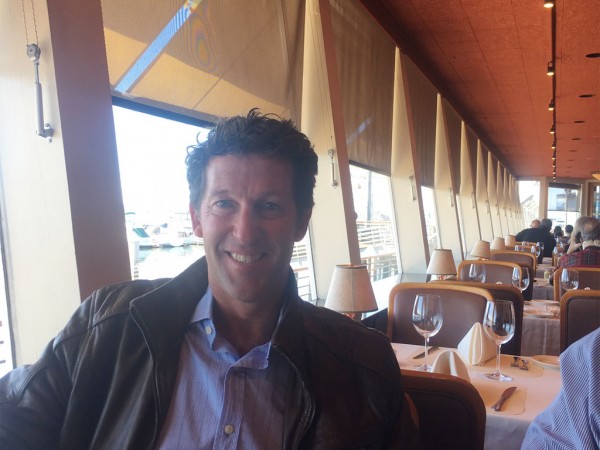Australian gold medalist uses best practices to train American sailors for 2020 Olympics…and is looking for help from U.S. maritime community.
Malcolm Page, Chief of Olympic Sailing, is determined to make the USA a sailing contender in the 2020 Olympic games.
In an interview with AJOT, Page said that best practices using technology can monitor physical stamina, vessel handling, and ensure the U.S. Olympic team sails with the best training available.
“In racing no technology is allowed on board, but we can use monitors to measure how our athletes sleep. We can also analyze their movements on board …body movement at the right time can accelerate the boat movement and at the wrong time can slow the boat.”
Page makes the analogy with surfing “when the surfer gets ready to ride the wave he starts to paddle and then picks the right moment to stand up. The same holds true in sailing, if you were riding a wave you have to know just the right moment to stand up and ride that wave.”
This is just one detail in the training process that Page and his coaches wish to address, but in order to do so they need better equipment, such as cameras sited strategically on sailing boats to capture how a sailor is handling the winds and waves.
Page would like to take this process a step further by purchasing drones to follow boats and capture the synergies between sailing performance and vessel handling.

He wants to incorporate the training and performance of sailors into a Best Practices compendium using monitoring systems and software to project failing, mediocre and best practices by Olympic sailors.
Traditionally, feedback from coaches would be the primary source of these practices, but Page wants coaches to benefit from more detailed feedback and data to help athletes do better.
He says the recent experiences of the U.S. America’s Cup sailing teams have provided a base of technology and methods that can be applied to train U.S. Olympic sailors.
Page moved from Rhode Island to the San Francisco Bay Area to train sailors in the challenging winds, waves and currents present in the Bay as well as to benefit from the proximity to Silicon Valley’s world-class electronics and software systems.
He hopes the combination will support better training methods and medals in the Tokyo Olympics in 2020.
He hopes that U.S. ports as well as maritime operators, suppliers and associations will support the U.S. Olympic Sailing Team’s efforts.
Page also wants U.S. Olympic sailors “to work and mentor younger people in sailing and learn to give back to the community.”
For this reason, the U.S. Olympic team is supporting the Treasure Island Sailing Club (TISC), a non-profit organization that teaches science and sailing to mostly San Francisco Middle and High School students. Many of the students have no prior sailing experience.
The U.S. Olympic team is building its training center on Treasure Island in the San Francisco Bay. The training center is alongside TISC’s facility.
This gives young would-be sailors the chance to see world-class sailing in action.
Page says, success still boils down to character: “you can be a competitive sailor at the age of eighteen but it probably takes another ten years to become an Olympic class sailor.”
At the end of the day, Page says, winning boils down to experience and the courage to surmount the challenges of wind and sea.

